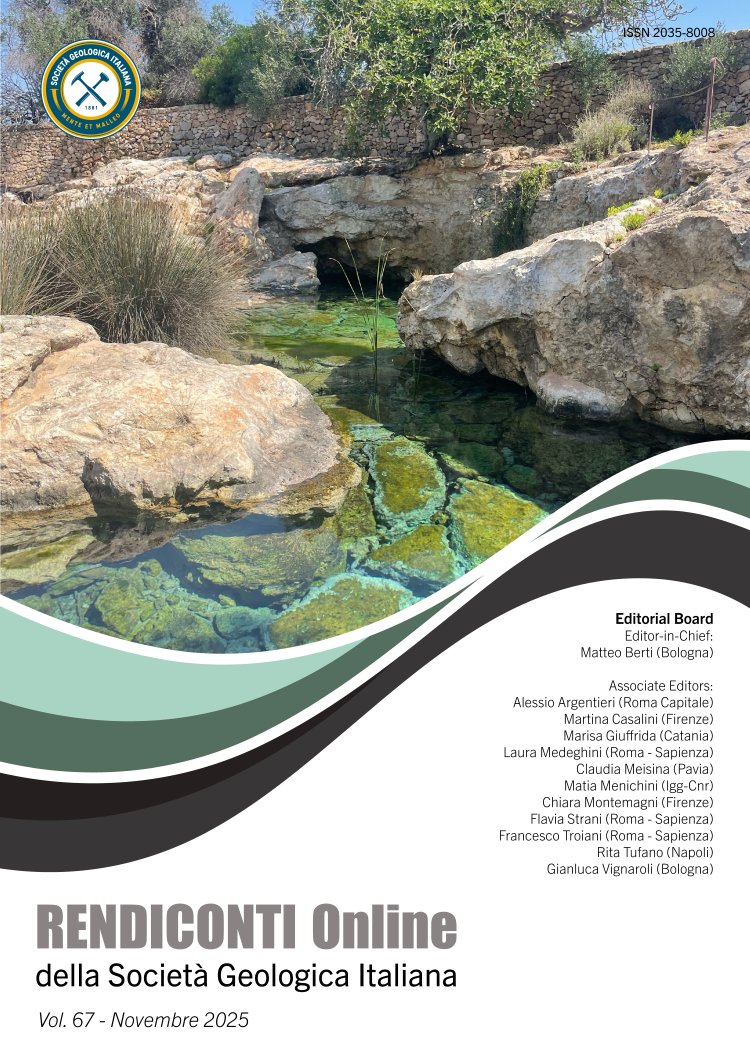
Anatomy of a cave/sinkhole karst system near the Adriatic coast
Francesco Campanale1, Isabella Serena Liso1,2, Mario Parise1,2 & Luigi Spalluto1
1Dipartimento di Scienze della Terra e Geoambientali, Università degli Studi di Bari Aldo Moro, Bari, Italia.
2Centro Interdipartimentale di Ricerca sulla Dinamica Costiera, Università degli Studi di Bari Aldo Moro, Bari, Italia.
Corresponding author e-mail: isabella.liso@uniba.it
Volume: 67/2025
Pages: 21-26
Abstract
Among the karst features characterizing the Apulian Adriatic coastline , caves and sinkholes are the main landforms. Puntore Cave is a anchialine cave connected to the surface through small sinkholes created by collapses. Within the cave, the floor is marked by widespread breakdown deposits, and by a water lake. This contribution describes the cave stratigraphy, its main speleogenetic characters, and the first phases of monitoring of the water, including the preliminary analysis of the stygofauna. Quaternary calcarenites and calcirudites cropping out at Puntore Cave consist of poorly lithified and weathered bioclastic packstones, grainstones and floatstones of Calcarenite di Gravina Fm, classified as soft rocks having complex rock fabrics and diagenetic features. Their peculiar petrographic features (grain-packing, matrix content, pore size and pore-size distribution, type and abundance of sparry cement in pore spaces) contribute to define the physical and mechanical behaviors and the resistance to weathering of carbonate rocks.
Preliminary data suggest that bioclastic grainstone, with interconnected pores partly filled by granular cements, is the pronest lithotype affected by weathering processes. Consequently, the subsequent rapid decay of the mechanical properties of this lithotype may have played an important role in triggering the sinkholes, and in opening the cave toward the surface.
Keywords
Get Full Text